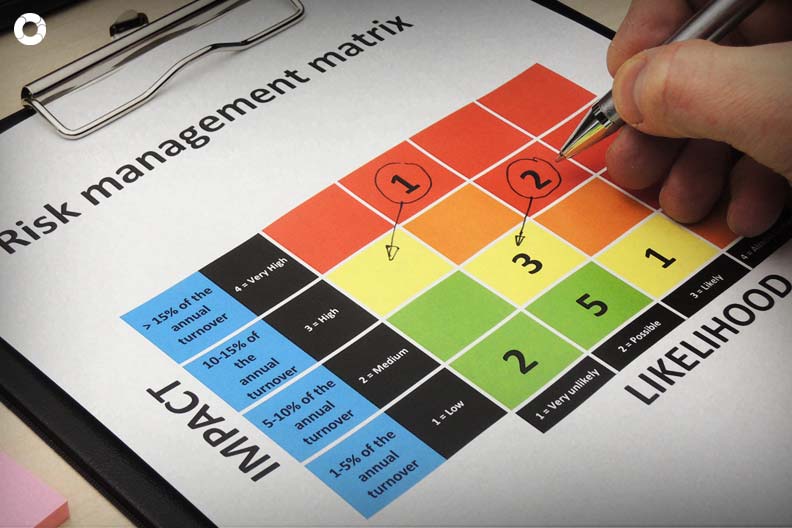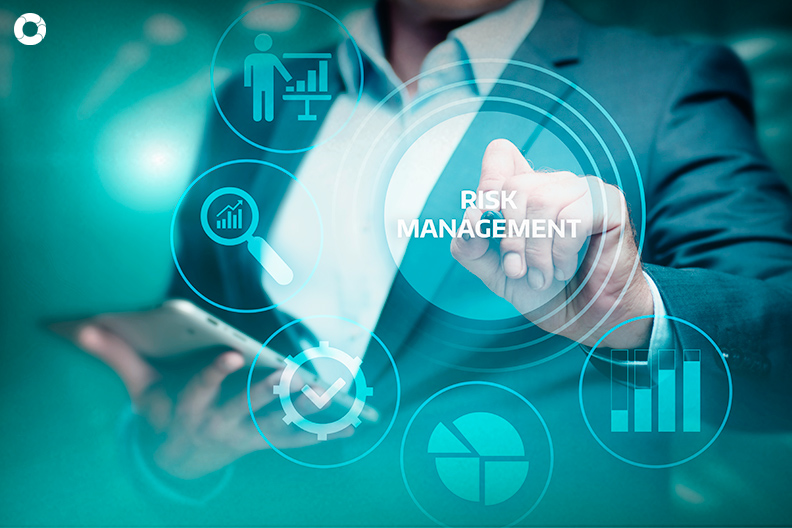How to identify risk with a control matrix

In today’s complex business environment, risk identification is a critical component of effective risk management. One of the most practical and structured tools available for identifying risks across processes, projects, or entire organizations is the control matrix. This article explores how to identify risk with a control matrix, breaking down the methodology, its components, and how it fits into a broader risk management framework. Whether you’re in manufacturing, finance, healthcare, or tech, this guide will provide a clear understanding of how to apply this tool in real-world settings.
There is a wide variety of methods for identifying risks, basically divided into deductive and inductive methods. Some methodologies are very specific and focus on the identification of certain types of risks, such as those of the manufacturing industry.
In the industrial environment, the methods are mainly based on the study of the facilities and on much more structured processes from the logical-deductive standpoint. They usually follow a logical procedure of deduction of faults, errors, processes and facilities, which in the end will determine a certain type of solutions for each of these events.
Common Risk Identification Methods
There’s a wide range of tools used for risk identification, particularly in industrial and high-stakes sectors. Some of the most widely adopted include:
-
What-If Analysis: Brainstorming various “what if” scenarios to anticipate problems.
-
HAZOP (Hazard and Operability Study): A structured technique to identify hazards in complex systems.
-
FTA (Fault Tree Analysis): A deductive approach that models failures using logical gates.
-
ETA (Event Tree Analysis): An inductive approach to visualize sequences of events.
-
FMEA (Failure Mode and Effects Analysis): An analytical process to evaluate potential failure modes and their effects.
While each of these methods has unique strengths, they may be too specialized or resource-intensive for general organizational use. That’s where the control matrix comes in.
What Is Risk Identification?
Before diving into the control matrix, let’s clarify what risk identification involves. Risk identification is the first step in the risk management process, and it focuses on discovering potential events that could negatively impact objectives. These risks could stem from internal operations, external environments, or interactions between the two.
There are two main categories of risk identification methods:
-
Deductive methods, which start from a known consequence (like a failure) and work backward to find possible causes.
-
Inductive methods, which begin with potential causes and examine their possible consequences.
Both approaches are valid and often used in combination, especially in structured industries like manufacturing or aerospace.
Control matrix
A control matrix is a structured, visual tool used to identify and evaluate risks, the controls in place to mitigate them, and any gaps that might exist. Originally developed by Jerry Fitzgerald in 1981, the control matrix is particularly effective at identifying threats and the specific components or resources they could impact.
Unlike more technical methods, the control matrix is broadly applicable across different industries and organizational areas—from operations to IT, finance to supply chain.
Why Use a Control Matrix for Risk Identification?
The control matrix in risk management offers several benefits that make it a compelling option for risk identification and mitigation:
1. Holistic Risk Identification
It allows organizations to capture a wide range of risks, from operational threats to compliance issues, across various functions and business units.
2. Visual Clarity
Because the matrix is often presented in a tabular format, it provides a clear snapshot of risks, controls, and responsibilities, which aids communication across teams.
3. Prioritization of Controls
By mapping risks to existing controls and scoring them by severity and likelihood, the control matrix highlights which areas need new or improved controls.
4. Strategic Decision-Making
The insights generated help in designing risk mitigation strategies, allocating resources, and supporting informed decision-making at all organizational levels.
How to design a risk matrix
For the design of the matrix, the so-called Delphi method is used, which basically consists of consulting a specific subject with a group of experts or specialists on the environment and operations of the organization or project. Thus, the components, threatened resources and possible threats to the object of analysis are identified and reflected in the matrix.
The matrix is built by placing the threatened resources (components) at the top of the rows and the threats at the top of the columns. Components are the resources to be protected and the threats are the negative events that may cause loss or affect the components.
Let’s break down how to design and apply a control matrix to your risk management efforts.
Step 1: Define the Scope
Before identifying risks, define what part of the organization or project you are analyzing. Are you focusing on a department, a business process, or an entire company? This clarity helps guide the next steps.
Step 2: Gather Expert Input (Delphi Method)
The Delphi Method is commonly used during this phase. It involves gathering insights from a panel of experts familiar with the operations and risk environment. These stakeholders help identify:
-
Key components or resources that need protection.
-
Possible threats to those components.
Step 3: Create the Matrix Layout
Draw a table where:
-
Rows represent threatened components/resources.
-
Columns represent potential threats.
At each intersection, note whether the resource is at risk from that threat. You can mark it with a binary value (Yes/No), a rating scale (1-5), or color-coding (Low/Medium/High risk).
Step 4: Assess the Risk
For each threat-resource pair, estimate the likelihood and potential impact. Use a risk rating scale, such as:
-
Likelihood: Rare (1), Unlikely (2), Possible (3), Likely (4), Almost Certain (5)
-
Impact: Negligible (1), Minor (2), Moderate (3), Major (4), Catastrophic (5)
Multiply these to get a Risk Score. This helps prioritize which risks demand immediate attention.
Step 5: Identify Existing Controls
List all current controls that address each identified risk. These may include policies, technologies, procedures, or physical safeguards. Evaluate their effectiveness—are they strong, moderate, or weak?
Step 6: Recommend New Controls
Where gaps are found or where existing controls are inadequate, propose new or improved control measures. This could include:
-
Automation of manual processes
-
Training programs
-
New monitoring systems
-
Updated policies or audits
Step 7: Assign Responsibility
Accountability is key. Every control and risk should be tied to a specific role or department to ensure ownership and follow-up.
Example: Risk Control Matrix in Action
Imagine you're assessing the IT department of a mid-sized company. Here's a simplified version of what the matrix might include:
| Component | Threat | Likelihood | Impact | Risk Score | Existing Control | Control Effectiveness | New Control Suggestion |
|---|---|---|---|---|---|---|---|
| Customer Data | Cyberattack | 4 | 5 | 20 | Firewall & antivirus | Moderate | Implement real-time monitoring |
| Server Uptime | Power failure | 3 | 4 | 12 | Backup generators | High | - |
| User Accounts | Unauthorized access | 2 | 4 | 8 | 2FA authentication | Strong | - |
See Table 1
Once the risks are identified, their probability of occurrence is established, along with a valuation thereof. After that, the rating and assessment processes begin.
Limitations of the Control Matrix
Like any tool, the control matrix has some downsides. According to Rubí Mejía Quijano, author of Administración de riesgos: un enfoque empresarial:
“The main advantage of the control matrix is the ease of identifying risks, determining existing controls and proposing new ones. Its main disadvantage is the amount of information and the tables that must be developed, as they can complicate or delay its application.”
However, many of these challenges have been reduced through automation and specialized risk management software, which make data input, visualization, and reporting more efficient.
Best Practices for Using a Control Matrix
-
Involve cross-functional teams for a broader risk perspective.
-
Review and update the matrix regularly, especially after major changes.
-
Leverage digital tools to manage large volumes of data.
-
Integrate it into your enterprise risk management (ERM) framework.
The Control Matrix as a Risk Management Ally
Learning how to identify risk with a control matrix equips organizations with a practical, scalable method for managing uncertainty. By visualizing risks and controls in a single framework, decision-makers can act quickly and efficiently to protect business value and stakeholder trust.
Whether you're an internal auditor, risk officer, project manager, or business leader, the control matrix is a valuable addition to your risk toolkit. It not only uncovers threats but also guides the development of stronger, more resilient controls.
Risk matrix
You May Also Like
These Related Stories

5 tools to identify risks in a company

Alternatives to Risk Management Models

Prevent money laundering by knowing your customer

How to assess risk with a control matrix

5 steps to make a risk map



Comments (1)